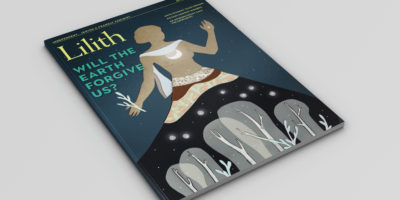
Hysteria
For a very long time, as long as I can remember, I wanted to write a novel. For a very long time, as long as I can remember, I also struggled with an eating disorder. My desire to write a novel was crystalline; as a child, I would read a book that floored me and I would think—in a way that I didn’t when I heard a gorgeous song or watched a hilarious show—I want to make something like that. My eating disorder was more elusive: for years, I didn’t even know that I had one. I knew a lot of other things, though, like that I was lonely; that my emotions felt out of control; that food made me feel better, but only for a short time; that my impulses were an enemy, and so was my body.
There are so many reasons to write a book, and so many reasons I wrote mine. I started working on Hysteria, my debut novel, which came out in August, in early 2016. But I think it’s instructive that I wanted to write a novel and get it published long before I even knew what I wanted to write about. That loneliness I mentioned earlier: that’s part of why I write, and why I’ve always wanted to. There’s probably some delusion in there, too, some confusion between being admired and being adored. But it’s easier to offer up these unflattering reasons, and easier too to understand them, than it is to own the sentimental ones. I also loved the shit out of shocking and beautiful sentences, loved them more than almost anything else in the world, for reasons I am glad I can’t fully articulate.
But back to Hysteria, which centers on a young woman drinking and sleeping her way through modern-day Brooklyn, who becomes convinced her bartender is Sigmund Freud. Wanting to write “a book” doesn’t mean wanting to write that. When I started conceiving my novel, I was fully obsessed with psychoanalysis, which I’d been in for close to a decade at that point. Hysteria is, in part, a love letter to the discipline; I drew inspiration from some of Freud’s case studies, offering up my unnamed narrator as an exemplar of the ways in which Oedipal relationships can go awry.
Unlike Freud’s case studies, though, Hysteria is written in first person, and a super-immersive first person at that. It was important to me that Freud’s appearance in the narrator’s life feel as real to the reader as it does to her; he appears because the narrator needs him to. It was equally important that I render on the page with as much precision as possible, a mind as self-punishing as my narrator’s, with as tenuous a grip on reality. I wanted to plunge readers into the shame-compulsion cycle so forcefully that, if they hadn’t experienced it, they might understand it.
Or maybe, more to the point, so that if they had experienced it, they would feel less alone. In recovery from my eating disorder, I’ve attended plenty of support-group meetings, and there is truly nothing like hearing that someone else has also eaten out of a trash can. Doing that by myself filled me with terror and despair; hearing that someone else has also done it makes me laugh with relief. In my protagonist, I transformed my eating disorder into a compulsive relationship with food and alcohol, which felt more interesting to me: I’ve spent quite enough time thinking about food, not to mention that an eat- ing disorder scene involves just one character, while a sex scene allows for two. (And: writing sex is fun. Try it!) This displacement also served as a wedge, separating my protagonist from me. It allowed for critical distance, which in turn allowed for (empathic) humor. This, I think, is one thing art can offer, and which I hope Hysteria offers readers who have suffered: just the right balance of companionship and perspective.





